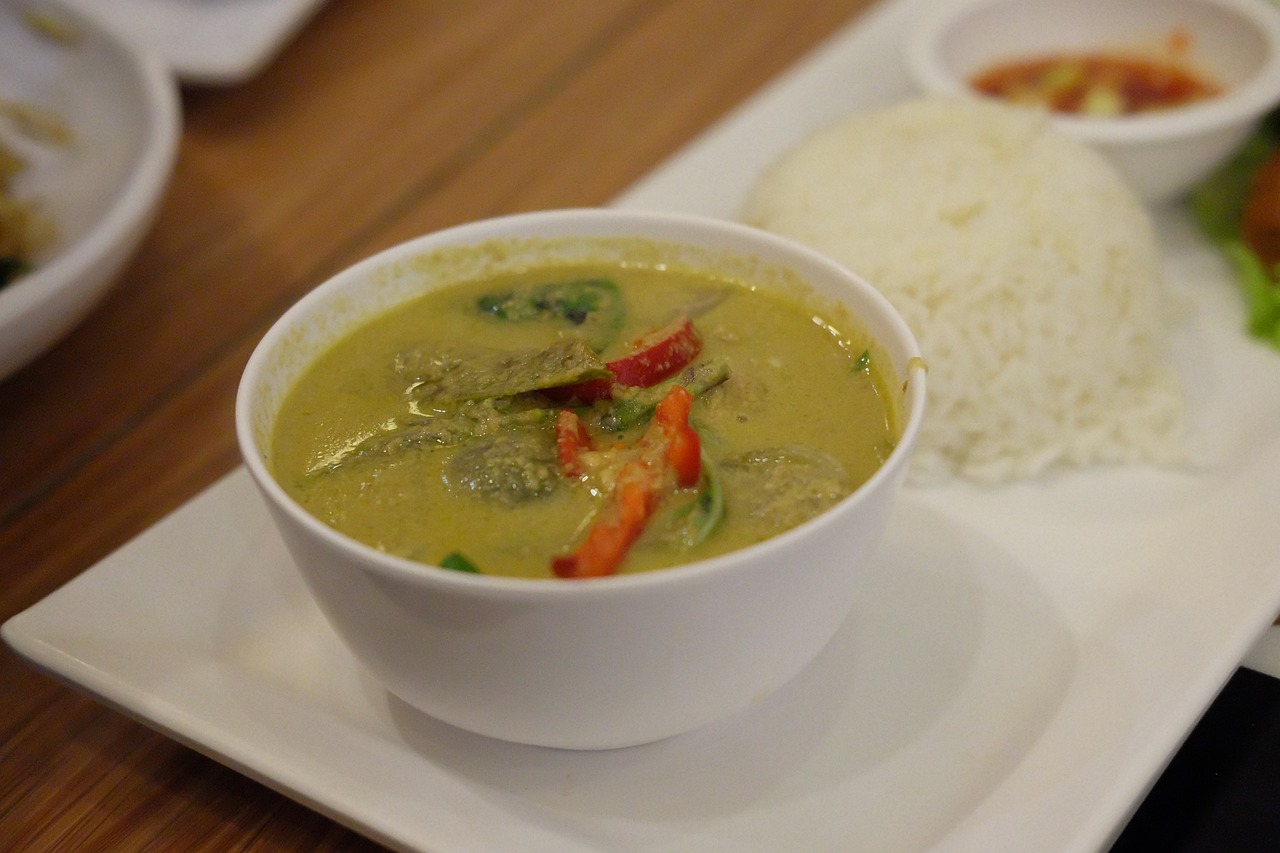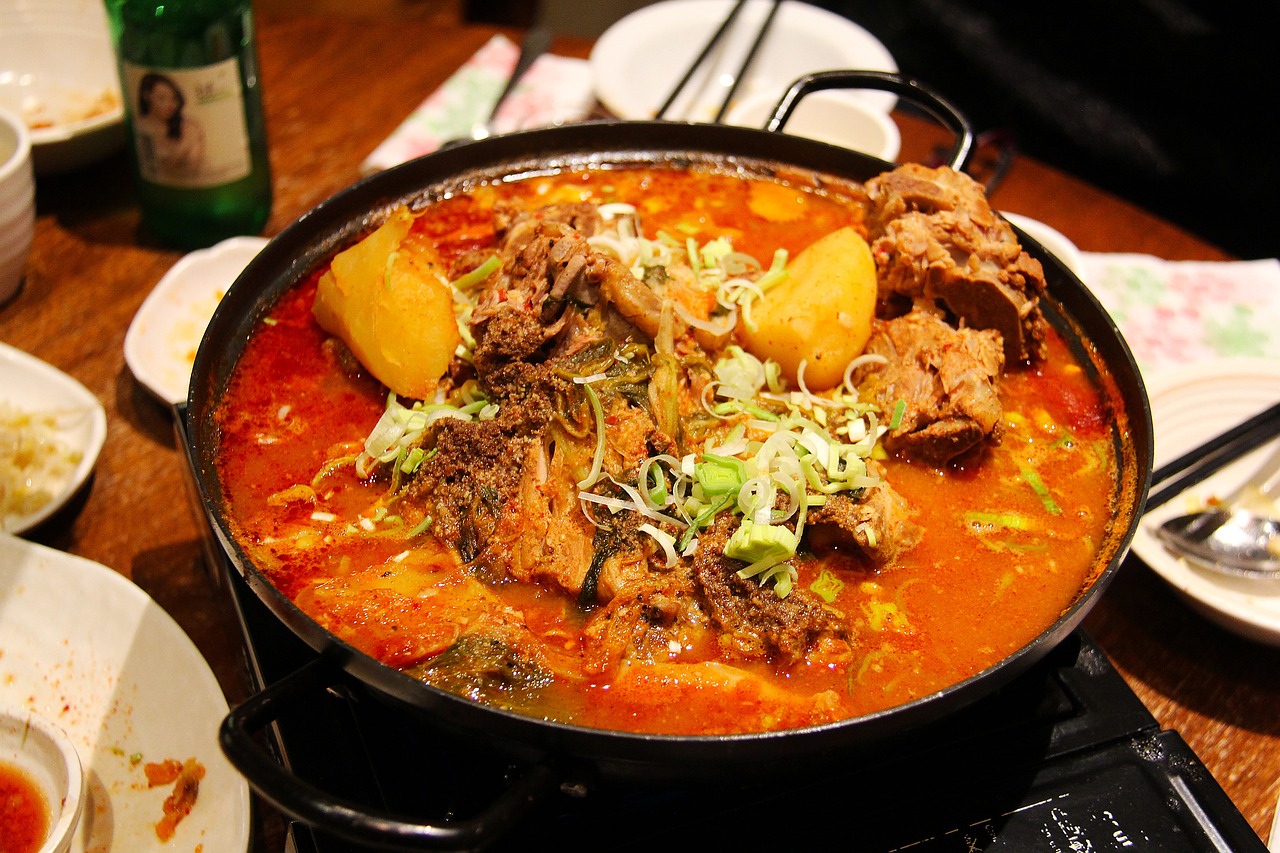If you love the taste of curry, then you may be wondering how long takeaway curry will last in the fridge. There are a few tips to help you determine the answer to this question. You can learn how to tell if the curry you bought has gone bad, how to reheat it if it has, and how to determine if it is good.
There are many reasons why a curry may not be as fresh as you would like. This is especially true if it has been frozen. Even though the freezing process is supposed to make the curry last longer, this doesn’t necessarily mean it will taste better—Curry’s texture and flavor change as it ages. Food with a sour smell is a sign of spoilage. Other symptoms include a change in color or consistency. If you suspect the curry you purchased has gone bad, it is a good idea to throw it away. You can tell if it’s spoiled, has a sour smell, a strange taste, or spongy texture.

What is Curry?
Curry is a South Asian food traditionally prepared by simmering meat or vegetables in a sauce that incorporates herbs and spices, including turmeric, cumin, coriander, and ginger. The term “curry” describes both the food and the condiment. Since then, curry has been famous worldwide, especially in India, the UK, and Japan.
Curry originated from the Tamil word “Kari,” which means sauce and is pronounced, “ka-REE.”
There are many flavors of curry foods, including red, green, yellow, and panang.
Regional variants also exist; Indian curries usually include chili peppers, while Thai curries frequently use lemongrass.
The type of meat and veggies used are other factors that affect how a dish tastes.
How Long will Takeaway Curry Last in the Fridge?
If properly stored in an airtight container, takeout curry can be kept in the refrigerator for three to four days. To ensure it is safe to eat and hasn’t lost its flavor or texture, it is advised to consume it within two days. Ensure the curry achieves a safe internal temperature of 165°F during reheating to eradicate any bacteria that might have developed during storage.
How to Freeze Takeaway Curry?
Follow these procedures to freeze curries from a takeout order:
- Allow the curry to finish cooling: Avoid freezing hot food because doing so can result in freezer burn and lower the dish’s quality.
- Transfer to an airtight container: To avoid freezer burn and guarantee that the curry stays fresh, use a freezer-safe container, freezer-safe plastic wrap, or freezer-safe aluminum foil.
- Put a date on the container’s label. To track how long something has been in the freezer, write the dish’s name and the date on the container with a permanent marker.
- Defrost in the freezer: Keep the container in the coldest section, where the temperature is always below 0°F.
- Transfer the frozen curry to the refrigerator overnight to defrost it, or use the microwaves defrost setting to thaw it out.
- Ensure the curry thaws to a safe internal temperature of 165°F before reheating it to eliminate any potential bacteria that may have developed during storage.
How to Thaw Frozen Takeaway Curry?
The following techniques can be used to thaw frozen takeout curry:
- Thawing in the refrigerator: Place the frozen curry in the fridge and let it thaw overnight or overnight until it is room temperature.
- Thawing in the microwave: Put the frozen curry in a dish that can go in the microwave and melt it there using the defrost setting. Stir the curry once in a while to ensure complete thawing.
- Put the frozen curry in a sealed plastic bag and submerge it in cold water. After 30 minutes, change the water and repeat until the curry has thawed.
No matter which method you use to thaw the curry, it’s crucial to avoid letting it remain at room temperature for an extended period because warm temperatures encourage bacterial growth. It is advised to reheat the curry to a safe internal temperature of 165°F before serving after defrosting.
How to Store Takeaway Curry?
Follow these steps to store curry from a restaurant:
- Allow the curry to finish cooling: Avoid attempting to keep hot food in the fridge because doing so will raise the temperature and increase the chance of bacterial growth.
- Transfer to an airtight container: To avoid air exposure and maintain the curry’s freshness, store it in a container with a tight-fitting lid, wrap it in plastic wrap, or cover it with aluminum foil.
- Put a date on the container’s label. To track how long something has been in the fridge, write the dish’s name and the date on the container with a permanent marker.
- Place the container in the fridge: Keep the temperature in the fridge’s main compartment constant and between 32°F and 40°F.
- Ensure the curry reaches a safe internal temperature of 165°F during reheating to eradicate any bacteria that might have developed during storage.
How to Reheat Takeaway Curry?
You can reheat takeout curry in one of the following ways:
- Reheating on the stovetop: Put the curry in a saucepan and heat it over medium heat, occasionally stirring, until the internal temperature reaches 165°F, which is the safe level.
- Reheating curry in the microwave is as simple as placing it in a microwave-safe dish, covering it with a lid or microwave-proof wrap, and heating it on high for 2–3 minutes or until it reaches a safe internal temperature of 165°F. To ensure that the curry warms evenly, stir it occasionally while it’s heating.
- Reheating the curry in the oven requires moving it into an oven-safe dish and wrapping it with aluminum foil. It should be baked in a preheated 350°F oven for 15 to 20 minutes or until the internal temperature reaches 165°F.
Whatever method you use to reheat the curry, it’s crucial to ensure it reaches a safe internal temperature of 165°F to eradicate any bacteria that might have developed during storage.
What are the Different Types of Curries?
Curry dishes come in various styles depending on the ingredients and preparation techniques. Curry comes in a variety of popular varieties, including:
- Indian curry: There are many different curries, each having a special combination of spices and flavors. The most famous Indian curries include vindaloo, rogan josh, butter chicken, and chicken tikka masala.
- Thai Curry: Thai curries, which are frequently made with a curry paste containing chili peppers, lemongrass, galangal, and other spices, are renowned for their strong flavors and vibrant colors. The massaman curry, red curry, and green curry are all common Thai dishes.
- Japanese Curry: Usually served with rice, Japanese curry is a warming and substantial dish. It is created with a gentler mixture of spices and frequently includes potatoes, carrots, and onions.
- African Curry: The ingredients and spices used in African curries vary significantly depending on the nation and location but may include items like peanuts, plantains, and sweet potatoes.
- Caribbean Curry: Caribbean curries frequently combine Indian curries.
These are just a handful of the wide varieties of curry meals that can be found worldwide. Each one offers a special combination of flavors and ingredients, and many are simple to modify to suit various preferences and dietary requirements.
How to Identify Takeaway Curries Last in the Fridge?
Here are some indicators that a takeout curry may be spoiled:
- Smell: If the curry has a strong or rancid odor, it may have gone rotten and should not be eaten.
- Curry should not be eaten if its color had changed from when it was first purchased because this could indicate spoiling.
- Texture: The curry should no longer be consumed if it has turned slimy or sticky.
- Taste: If the curry has an unpleasant aftertaste or a sour, bitter, or off-flavor, it has probably gone bad and should not be eaten.
To reduce the danger of contracting a foodborne illness, it is crucial always to use proper food handling and storage techniques, such as rapidly chilling the curry and reheating it to a safe internal temperature of 165°F. It is recommended to err caution and discard the curry if you have doubts about its quality.
What are the Side Effects of Consuming Spoiled Takeaway Curry?
Food illness and various symptoms can result from eating contaminated takeout curry. Some typical signs include:
- One of the most typical signs of food poisoning is nausea and vomiting, which are brought on by the toxins that bacteria in rotten food create.
- Consuming rotten food can also result in diarrhea, which can cause watery or loose stools and dehydration.
- Abdominal pain and cramping can be brought on by the toxins that bacteria in rotten food create, which can irritate the digestive system.
- Fever: As the body works to combat the infection, the severe foodborne disease may result in a frenzy.
- Fatigue: Because the body is expending a lot of energy trying to get rid of the toxins, food poisoning can also make you feel weak and exhausted.
Get medical assistance immediately if you have these symptoms after consuming takeout curry. Food poisoning can occasionally result in more severe health issues, so getting treated right away is crucial to avoid consequences.
Reference: Proximal composition and fat type of three popular takeaway meals
Fish and chips, chicken chow mein, and beef curries were purchased as random samples from several establishments in a town in the North of England. Protein, salt, and the quantity and kind of fat were examined. Most of the fat in all three meals was saturated and mono-unsaturated. Still, the fish and chip samples’ saturated content was especially high because those foods are typically fried in beef dripping. The chow meins and curries had a lower fat content than the fish and chips, which had a much higher fat load.
Conclusion
If you enjoy Indian takeaways and want to ensure you get the best flavors from them, you’ll need to know how to reheat them. You’ll need to use the right method to avoid food poisoning.
Reheating a takeaway curry is not a complicated process. To begin, you’ll need an oven-proof dish and a non-stick pan. Next, you’ll need to preheat the oven to 130 degrees Celsius. Once you’ve preheated the oven, you’ll want to add your food to the tray. Depending on the size of your dish, you’ll need to reheat it for a different amount of time.
